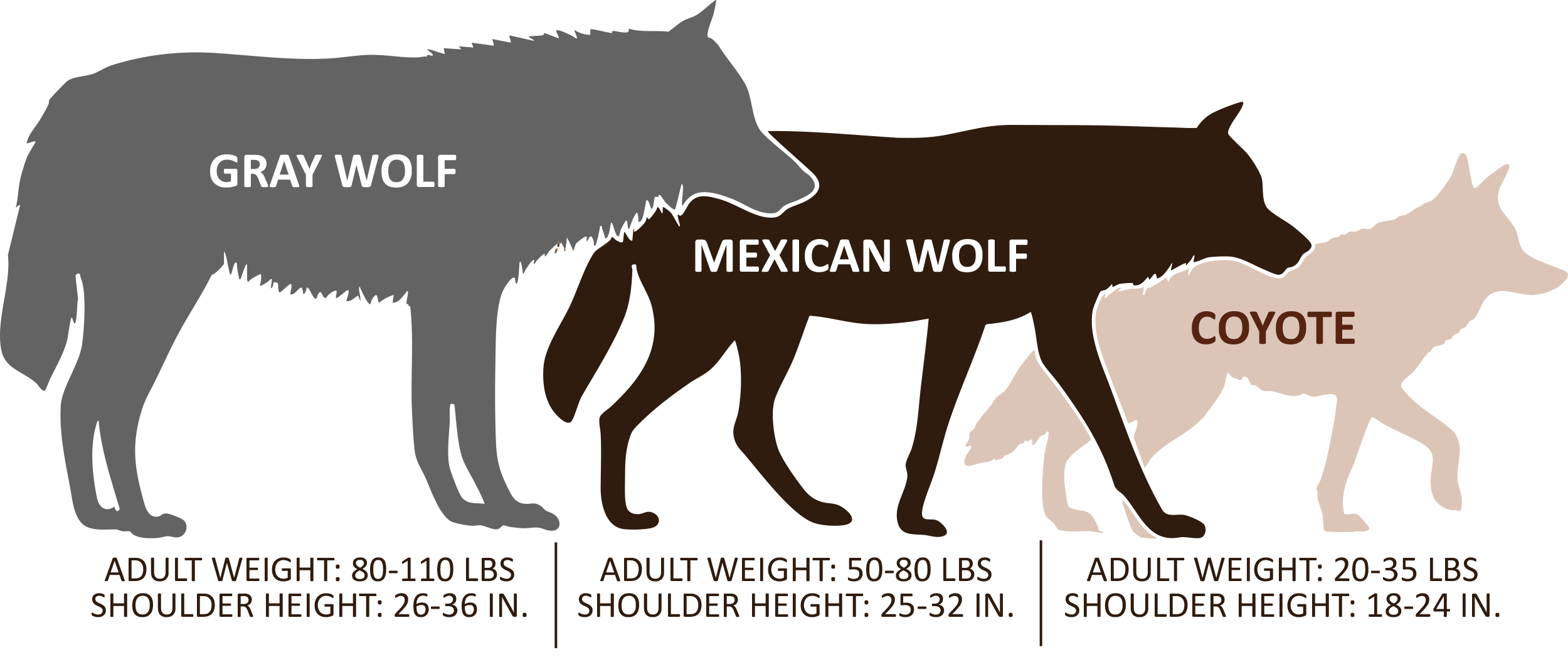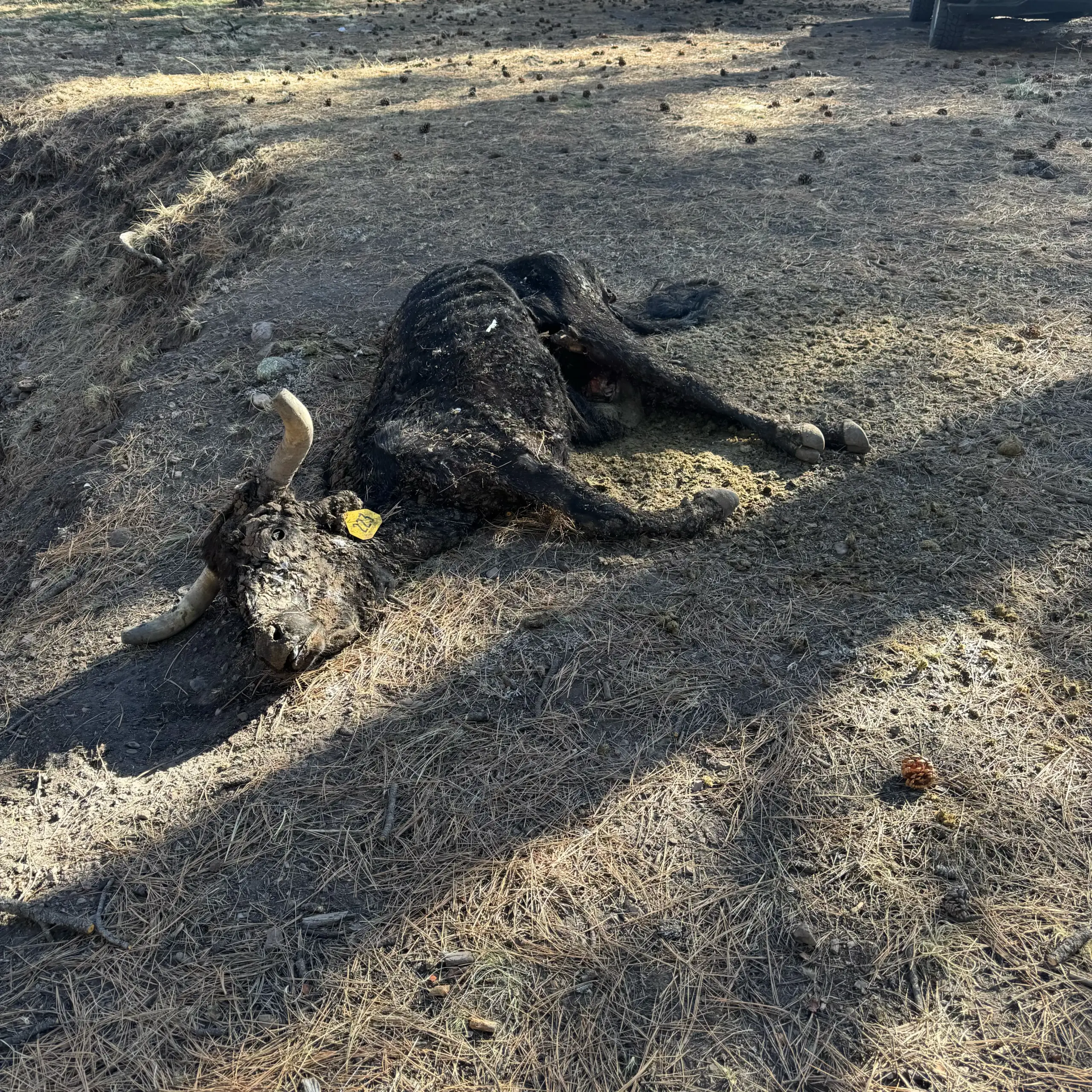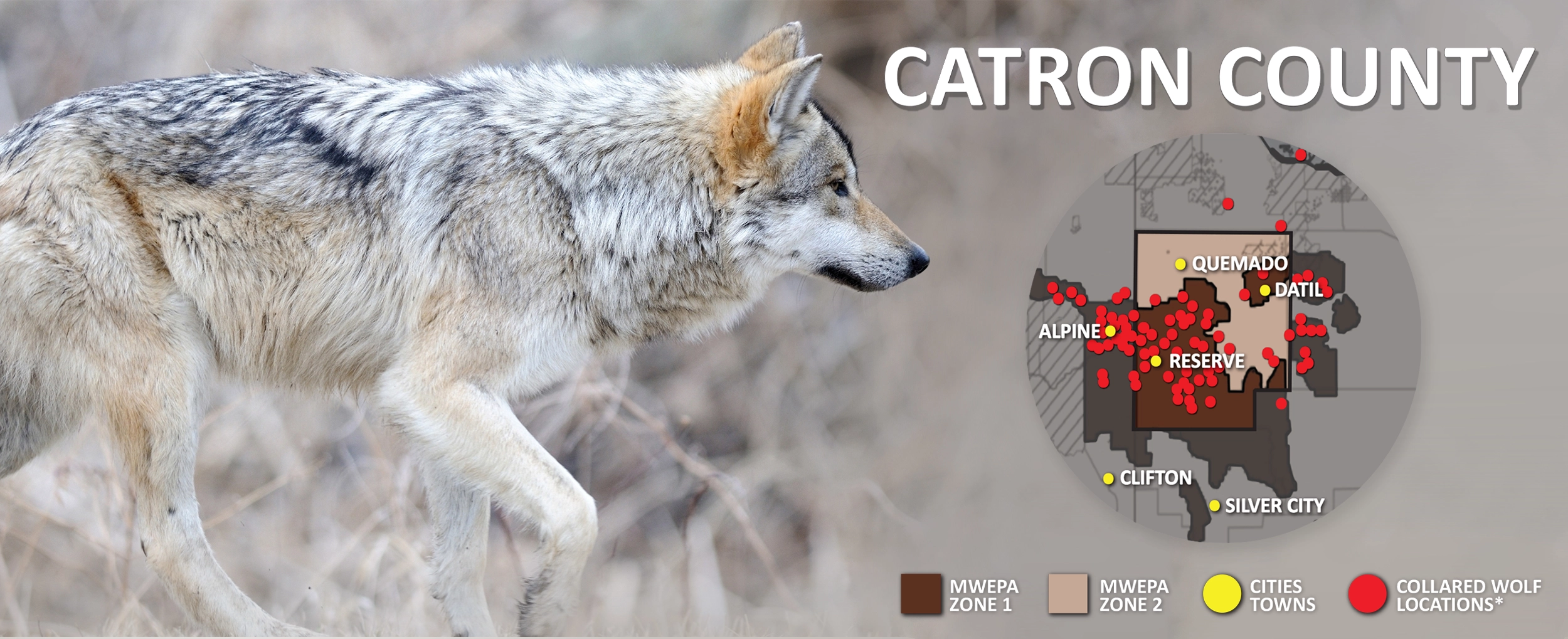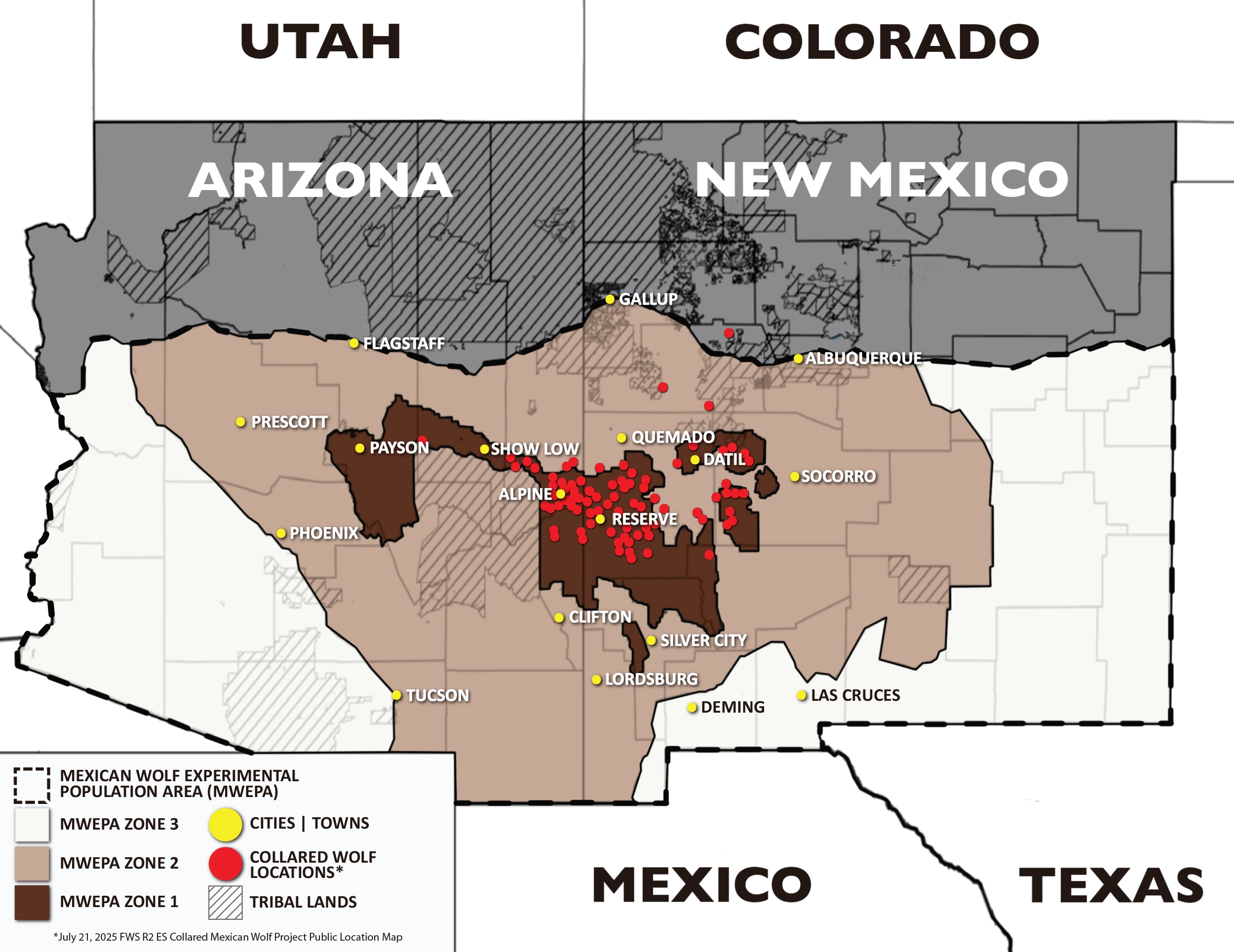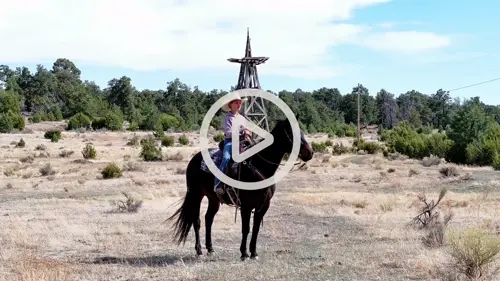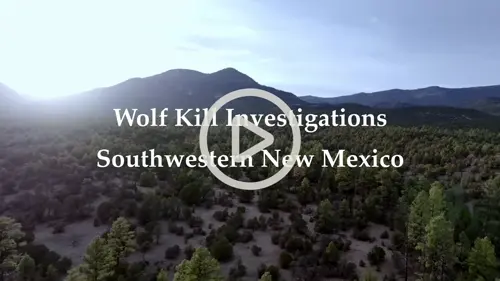HISTORY
• The Mexican wolf was reintroduced in 1998 by the U.S. Fish & Wildlife Service (FWS) in southeastern Arizona and southwestern New Mexico.
• The original recovery goal was to reach 100 wolves in the wild.
• In 2017, the FWS issued a revised recovery plan, setting a new long-term goal of 320 wolves in the U.S. population, with that number sustained over 8 years
• The plan links U.S. wolf management to population progress in Mexico, complicating state efforts to manage wolves based on local conditions and needs.
• The recovery plan includes cross-fostering of captive-born pups and direct releases, with Catron County, NM receiving a disproportionate share of these placements—leading to some of the highest wolf concentrations in the region.
• Though the New Mexico Department of Game and Fish (NMDGF) participates in the Interagency Field Team, it does not have primary control over wolf management while the species remains federally protected under the Endangered Species Act.
• For New Mexico to gain full authority and implement locally informed wildlife management, the Mexican gray wolf must be de-listed from its current federal endangered status.
• In 2024, SOP 11.1 went into effect, changing how depredations are evaluated and making it significantly harder for ranchers to receive compensation for livestock losses.
• Additionally, SOP 26.1 prohibits sharing real-time wolf location data with livestock producers, hindering their ability to monitor threats and protect herds.
• While the wolf population has grown rapidly, the tools, transparency, and support available to impacted communities have not kept pace, leaving rural areas to shoulder the burden.

